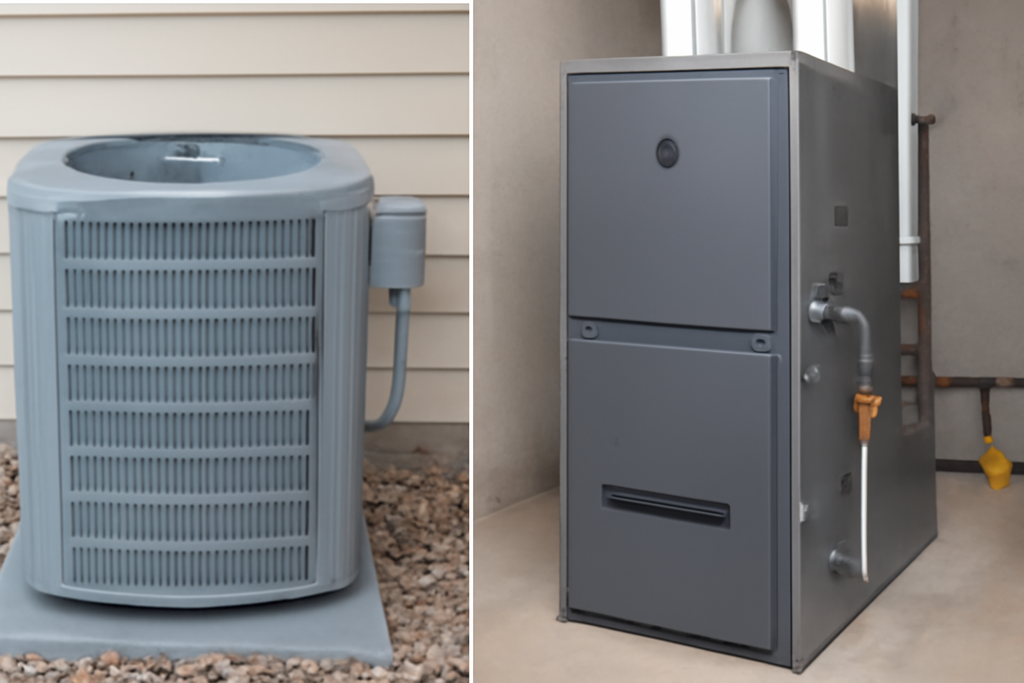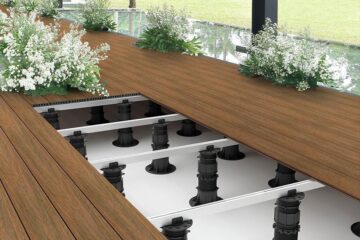When it comes to creating a comfortable living environment, one of the most important decisions you can make as a homeowner is choosing the right heating and cooling systems. A gas furnace for heating and an air conditioning unit for cooling are two of the most commonly used systems in residential homes. However, installing and maintaining these systems involves careful planning, a significant financial investment, and a thorough understanding of your home’s unique requirements. This article will provide a comprehensive analysis of the key factors to consider when installing a gas furnace and air conditioning unit in your home, balancing trade-offs, challenges, and the long-term benefits of choosing the right systems for your needs.
Understanding the Basics: Gas Furnace and AC Unit
Before diving into the details of installation, it’s crucial to understand the basic functions of both systems. A gas furnace operates by using natural gas or propane to generate heat, which is then circulated throughout your home using ductwork and vents. It is highly efficient in colder climates, providing reliable warmth during the winter months. On the other hand, an air conditioning unit cools the indoor air by removing heat and moisture, ensuring that your home remains comfortable during the summer months.
Together, these systems provide a year-round solution for maintaining optimal indoor temperatures. However, several factors must be considered when installing a gas heating system and air conditioning system in your home, from energy efficiency to installation costs and environmental impact.
Key Factors to Consider When Installing a Residential Furnace and AC System
1. Home Size and Layout
One of the most important factors to consider is the size of your home. A home that is too small or too large for the chosen system can lead to inefficiency, higher energy costs, and discomfort. A professional contractor will typically perform a load calculation, which takes into account the square footage of your home, the number of windows and doors, the insulation quality, and the climate in your area. This calculation will help determine the appropriate capacity for both the residential furnace and AC unit.
For example, a larger home will require a more powerful furnace and a higher-capacity AC unit to ensure that every room receives adequate heating and cooling. In contrast, smaller homes may not need high-powered systems and can benefit from more compact, energy-efficient units.
2. Energy Efficiency and Operating Costs
Energy efficiency is a major consideration when selecting both your heating and cooling systems. Today’s gas furnaces and AC units are available with high-efficiency ratings, which directly impact your long-term energy costs. A high-efficiency residential furnace, often labeled with an Annual Fuel Utilization Efficiency (AFUE) rating, can reduce heating costs significantly by converting more fuel into usable heat.
Similarly, modern air conditioning systems come with Seasonal Energy Efficiency Ratio (SEER) ratings that help homeowners understand how efficiently the unit will operate. Higher SEER ratings indicate better efficiency, resulting in lower electricity bills.
While higher-efficiency systems typically come with a higher upfront cost, the savings on monthly utility bills can make up for this difference over time. For homeowners living in regions with long winters or hot summers, the benefits of investing in energy-efficient systems can be substantial.
3. Installation Process and Professional Assistance
Installing a gas furnace and air conditioning system involves complex processes, which is why professional installation is recommended. Attempting to install these systems yourself can lead to improper setups, which could affect the performance, efficiency, and lifespan of the units.
The installation of a gas heating system requires expert knowledge of gas lines, venting systems, and combustion processes. Any errors during installation can pose serious safety risks, such as carbon monoxide leaks. Similarly, installing an air conditioning system requires precise ductwork design, refrigerant handling, and proper electrical connections to ensure that the system functions as intended.
Choosing an experienced HVAC contractor is essential for ensuring that both systems are installed properly. The cost of professional installation can vary, but it is a critical investment to protect your home and guarantee long-term system performance.
4. Climate Considerations
When deciding between a gas furnace and an air conditioning system, the climate of your region plays a significant role. In colder climates, a gas furnace is often the most effective and reliable option for keeping your home warm during the winter months. It provides consistent heating, even in sub-zero temperatures, making it a popular choice for regions that experience harsh winters.
In warmer climates, an air conditioning system becomes essential for managing high temperatures. The system not only keeps the home cool but also removes humidity, making the indoor environment more comfortable. In areas with moderate climates, a combined system with both a gas heating system and air conditioning system ensures that you are covered throughout the year.
Balancing Trade-Offs: Choosing the Right System
While gas furnaces and air conditioning systems are reliable and efficient, choosing the right combination for your home involves balancing trade-offs. For instance, some homes may benefit from a dual system that includes both a gas furnace for heating and an air conditioning system for cooling. However, the cost of installing two systems, along with the necessary ductwork and electrical wiring, can be significant.
In cases where space or budget is a concern, homeowners may opt for a combined unit, such as a heat pump, which provides both heating and cooling in one system. While a heat pump can be a more cost-effective option, it may not perform as well as a gas furnace in extremely cold climates, as its heating capacity decreases when temperatures dip below freezing.
For those living in regions with mild winters and hot summers, a heat pump or ductless mini-split system may be more suitable. These systems offer flexibility, energy efficiency, and reduced installation costs. However, they may not be as powerful or cost-effective as traditional gas furnaces and air conditioning units.
Challenges and Considerations During Installation
1. Cost of Installation
One of the biggest challenges when installing a gas heating system and air conditioning system is the upfront cost. The price of both systems, along with the cost of professional installation, can be significant. However, it’s important to remember that these systems are long-term investments that can provide comfort and savings for many years.
In addition to the cost of the units themselves, other factors such as the need for new ductwork, electrical upgrades, or gas line modifications can increase the overall cost of installation. Homeowners should obtain multiple quotes from contractors to ensure they are getting a fair price and the most reliable service.
2. Space Requirements and Ductwork
The space available in your home can also impact the installation process. For example, if you are replacing an old system, the new residential furnace may need to be installed in a different location to accommodate updated safety codes or improve airflow efficiency. Similarly, installing an air conditioning system may require modifications to your home’s ductwork or the addition of new vents and registers.
In cases where installing a traditional system is not feasible, ductless mini-split systems can provide a flexible solution. These systems do not require extensive ductwork, making them ideal for homes with limited space or those undergoing renovation.
3. Environmental Impact
As concerns about climate change grow, more homeowners are considering the environmental impact of their heating and cooling systems. Gas furnaces, while efficient, do contribute to greenhouse gas emissions due to their reliance on fossil fuels. Conversely, air conditioning systems use refrigerants, which can also have a significant environmental impact if not properly maintained.
To reduce their environmental footprint, many homeowners are opting for energy-efficient systems that use eco-friendly refrigerants or renewable energy sources, such as solar power. Additionally, regular maintenance, such as ensuring that refrigerant levels are correct and gas furnaces are operating at peak efficiency, can help reduce the environmental impact of these systems.
Conclusion
Installing a gas furnace and air conditioning system in your home is an important decision that requires careful consideration of a variety of factors, including your home’s size, climate, budget, and the energy efficiency of the units. By understanding the key factors involved in choosing the right system, balancing the trade-offs between different options, and working with a professional installer, you can ensure that you are investing in a reliable, cost-effective solution for year-round comfort.
While the initial investment may seem high, the long-term benefits of energy savings, increased home comfort, and improved air quality make these systems a worthwhile investment. Additionally, with the ongoing advancements in HVAC technology, homeowners now have more options than ever to ensure that their systems are as efficient and environmentally friendly as possible.
Ultimately, the right choice for your home will depend on your unique needs, climate, and budget. By weighing the trade-offs, understanding the challenges, and seeking professional guidance, you can make an informed decision that will benefit your home for years to come.




